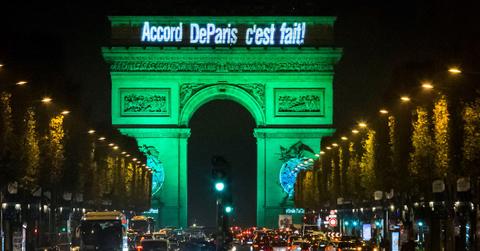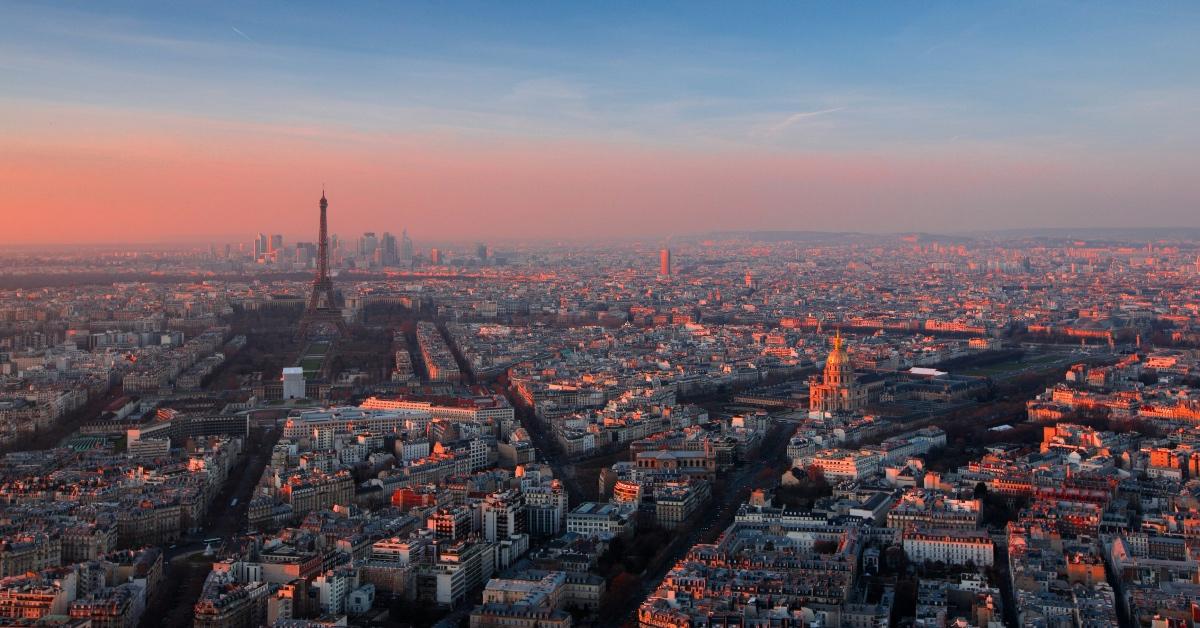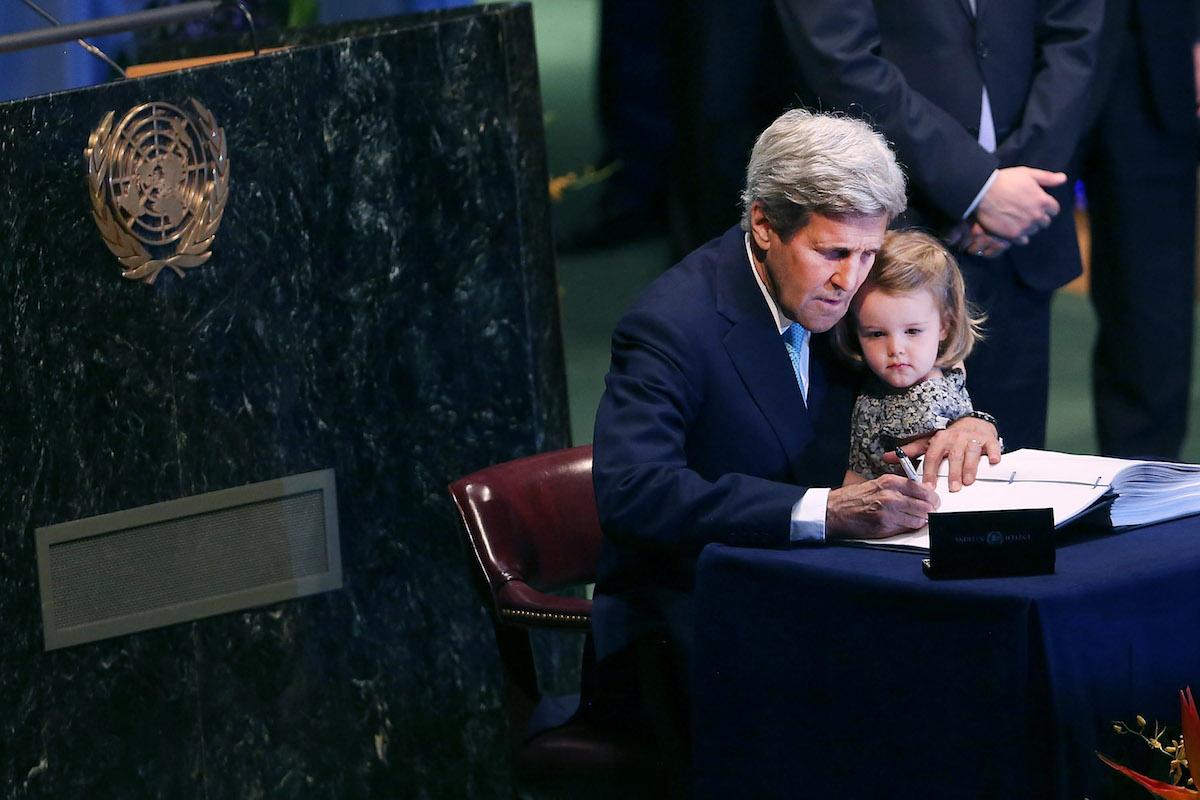What Is the Paris Agreement? Everything You've Been Wondering About the Landmark Climate Accord
Here's exactly what the Paris Agreement does.
Updated Jan. 21 2025, 9:36 a.m. ET

The Paris Agreement, also known as the Paris Climate Agreement or the Paris Accord, is often talked about in conversations surrounding the climate crisis. The Paris Agreement lays out clear goals for the entire planet to work together to help curb the global temperature rise, and nearly every country on Earth has signed the agreement.
Ever since President Trump withdrew from the Paris Agreement shortly after taking office for the second time, more and more Americans have grown concerned about the role of the U.S. in fighting the climate crisis.
Read on to learn all about the Paris Agreement, the involvement of the U.S. in the agreement, and more.
What is the Paris Climate Agreement?

The Paris Agreement is a landmark climate agreement reached by all 197 parties (representing pretty much every country in the world) of the United Nations Framework Convention on Climate Change (UNFCCC), and later ratified by 187 of those countries.
The 32-page agreement, signed in 2015, meant all 197 parties had made a pact to combat climate change by ramping up actions and investments that will help establish a low-carbon future.
How does the Paris Agreement fight climate change?
The agreement brings nearly every nation on the planet together to fight the climate crisis, adapt to the ways it is hurting the planet, provide support to developing countries who need it, and help "[chart] a new course in the global climate effort."
However, as the above tweet notes, the original Paris Agreement document does not mention coal, oil, (natural) gas, or fossil fuels — even though dismantling those industries should be at the center of protecting the planet from the climate crisis.
The Paris Climate Agreement, explained.

U.S. Secretary of State John Kerry holds his two year-old grand daughter Isabel Dobbs-Higginson for the signing of the accord at the United Nations Signing Ceremony for the Paris Agreement climate change accord that came out of negotiations at the COP21 climate summit last December in Paris. on April 22, 2016 in New York City.
There is one central tangible goal of the Paris Agreement: to keep the global temperature rise this century below 1.5 degrees Celsius (2.7 degrees Fahrenheit) above pre-industrial levels. The global temperature rises when there are increased greenhouse gases in the atmosphere (via the greenhouse effect), so to keep global temperatures from rising, we need to reduce greenhouse gases in the atmosphere.
To reduce greenhouse gases in the atmosphere, we need to lower greenhouse gas (GHG) emissions. GHG emissions primarily come from burning fossil fuels (for electricity, transportation, heating, and in animal agriculture). To lower GHG emissions, we humans need to significantly shift away from our reliance on oil and gas, and shift towards renewable energy sources.
What are parties of the Paris Agreement required to do?
The Paris Agreement requires every country to make “nationally determined contributions” (NDCs), which include individual goals for countries, states, and cities to achieve net-zero carbon emissions by 2050 (or ideally, 2030). Each party is also required to report its emissions to the UN.
Countries' goals under the Paris Agreement:
Since joining the Paris Agreement, various countries have set goals to reduce emissions by specific amounts within certain timeframes.
According to The Los Angeles Times, Norway is committed to reducing its emissions 40 percent by 2030, and has a goal of reaching “net zero” emissions by 2050; the U.K. is legally requiring itself to produce net zero emissions by 2050; and India has a goal of providing 40 percent of the nation’s energy from non-fossil fuel sources by 2030.
Some countries also have goals of shifting their transportation sectors to renewable energy sources and/or shifting citizens away from driving gas-powered cars and instead taking public transportation, biking, walking, or carpooling.
When was the Paris Agreement signed?

The Paris Agreement was signed on Dec. 12, 2015, at the COP21 (United Nations Climate Change Conference) just outside of Paris, hence the name "Paris Agreement." All 197 countries in the world (two of which are only observer states — Holy See and the State of Palestine) signed the agreement, pledging to work together towards curbing climate emissions.
How many countries have ratified the Paris Agreement?
Of the 197 parties, 187 have ratified the agreement, which means the agreement is formally endorsed in their countries. All 20 of the G20 countries (one of which is the entire European Union) have ratified, except for Turkey. The G20 are 20 of the world's most powerful countries, which collectively represent about 80 percent of the world’s economic output, 67 percent of the global population, and 75 percent of international trade, according to G20.org.
Explaining Donald Trump's withdrawal from the Paris Agreement:

President Trump made the statement that the United States is withdrawing from the Paris Climate Accord, in the Rose Garden of the White House, On Thursday, June 1, 2017.
On Jan. 20, 2025, President Donald Trump began his second term by signing an executive order withdrawing the U.S. from the Paris climate agreement "immediately." However, the Paris Accord does have a one-year notice period, per Politico, so it is likely that the withdrawal will not formally take effect until 2026.
In his previous term, Trump announced his intention to withdraw in 2017 and successfully withdrew the U.S. from the Paris Accord.
Why did Trump really withdraw from the Paris Agreement?
According to NPR, while signing executive orders onstage at the Capital One Arena on Jan. 20, Trump told his audience, "I'm immediately withdrawing from the unfair, one-sided Paris climate accord rip-off." He added, "The United States will not sabotage our own industries while China pollutes with impunity."
Trump holds a pro-fossil fuel stance encouraging the energy sector to "drill baby drill" for oil, per Forbes. He also declared the U.S. in an "energy emergency" shortly after taking the oath of office. Trump believes that U.S. oil and gas companies will ensure America's economic growth — all at the cost of the environment.
Did the U.S. withdraw from the Paris Agreement?
The earliest U.S. was legally allowed to withdraw from the Paris Agreement was Nov. 4, 2020 — one day after the presidential election. The U.S. remained a ratified party of the Paris Agreement until that date, at which point we officially left the accord.
Former President Joe Biden pledged to immediately recommit the U.S. to the Paris Agreement should he win the election. Biden followed through with his promise, and on his first day in office as POTUS, he filed the paperwork to rejoin the accord. One month later, the U.S. was made a party of the Paris Agreement once again.
Shortly after the inauguration on Jan. 20, 2025, Trump signed executive actions to double down on fossil fuels and withdraw from the Paris Agreement for the second time.
This article, originally published on Feb. 12, 2020, has been updated to reflect the current presidency.